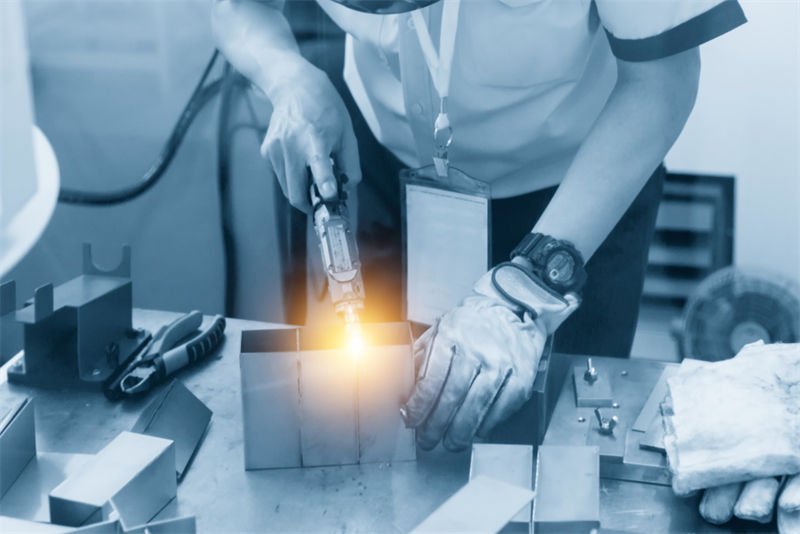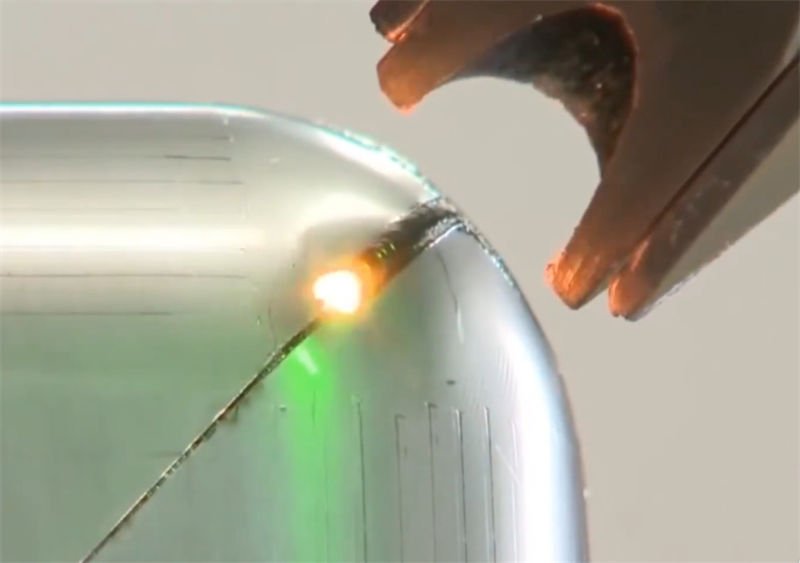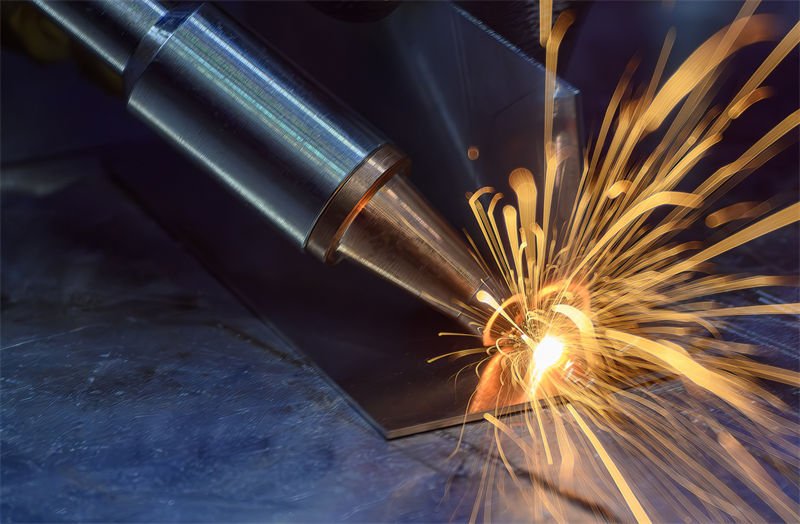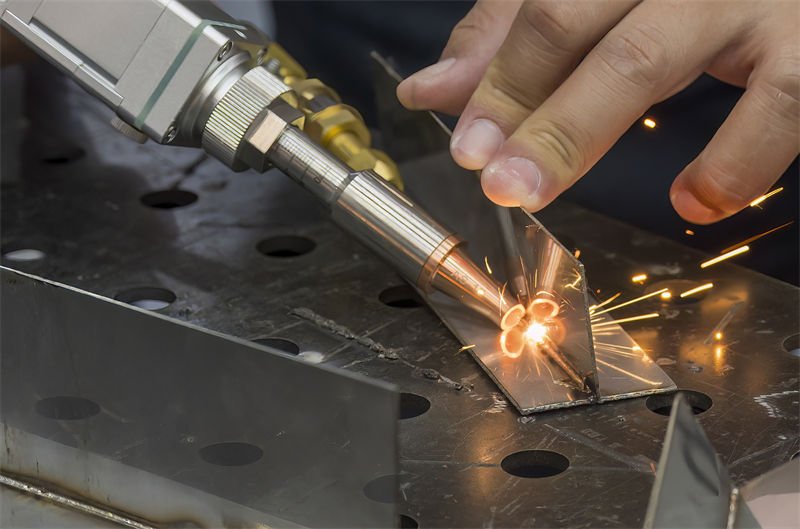
Imagine holding the future of welding right in your hand.
The 1500W mini handheld laser welding machine offers unmatched precision, speedy processing, and user-friendly operation compared to traditional methods. Its portability and efficiency make it perfect for both experts and beginners, delivering cost-effective solutions in industrial settings.
I remember the first time I laid eyes on a mini handheld laser welding machine—its compact design and promise of precision were like something out of a sci-fi movie. But beyond its futuristic appeal, this little powerhouse packs some serious benefits. It’s like having the precision of a seasoned artisan with the speed of modern technology all wrapped into one.
For me, it was like upgrading from a manual typewriter to a sleek laptop. Suddenly, tasks that used to take hours were done in a fraction of the time, without compromising on quality. This machine not only saves time but also cuts costs, making it a win-win for both seasoned technicians and newbies alike.
The beauty of it lies in its simplicity and portability. Whether you’re a skilled craftsman or just starting out, this tool levels the playing field by offering ease of use without sacrificing performance. It’s not just a machine; it’s a game-changer for anyone looking to enhance their welding projects.
The 1500W laser welder is less precise than traditional methods.False
The machine offers superior precision compared to traditional welding.
Mini handheld laser welders are cost-effective for industrial use.True
They provide efficient solutions, reducing costs in industrial applications.
How Does a 1500W Mini Handheld Laser Welding Machine Work?
Ever wondered how a compact tool like a 1500W mini handheld laser welding machine could redefine your welding experience?
A 1500W mini handheld laser welding machine works by using a high-power laser beam to melt materials, forming a precise weld. It comprises a laser source, welding torch, wire feeder, and cooling system, enabling portability and accuracy in various industrial settings.

I remember the first time I got my hands on a 1500W mini handheld laser welding machine—it was like holding the future. This device, with its sleek design, felt like a magic wand that could effortlessly join metals with just a flick of the wrist. Let me walk you through its fascinating components and operation.
Components of the 1500W Mini Handheld Laser Welding Machine
Think of this machine as a symphony of precision tools working in harmony:
-
Laser Source: Imagine this as the heart of the operation, generating the powerful beam needed for welding. It’s designed to be energy-efficient, ensuring that every pulse is precise and consistent.
-
Welding Torch: This is where the magic happens. Equipped with an intuitive operating system, the torch directs the laser beam onto your workpiece. You can tweak settings for beam intensity and focus, adapting to whatever material you’re working with.
-
Wire Feeder: Like adding spices to a dish, this component supplies filler material during welding, ensuring your joints are strong and reliable.
-
Cooling System: Picture this as the unsung hero, quietly managing heat dissipation with a water-cooled system to keep everything running smoothly.
| Component | Function |
|---|---|
| Laser Source | Generates the laser beam |
| Welding Torch | Directs beam onto workpiece |
| Wire Feeder | Supplies filler material |
| Cooling System | Manages heat dissipation |
Operation Principles
Operating this machine feels like being at the helm of a futuristic console. You start by dialing in settings on the interface—adjusting parameters like laser intensity1 based on what you’re welding. Then, guiding the welding torch along the joint line becomes an art form, as the high-energy laser melts and fuses materials seamlessly.
One of my favorite parts about using this machine is how it makes traditional methods look clunky and outdated. Its precision means less distortion, perfect for delicate tasks like electronics or automotive parts.
Advantages of Using a 1500W Mini Handheld Laser Welding Machine
It’s not just about power; it’s about portability and precision:
- Portability: Its compact size means I can take it anywhere—perfect for those impromptu site repairs.
- Precision: The fine control over beam intensity allows for delicate tasks without breaking a sweat.
- Efficiency: It’s faster than conventional methods, saving me time and hassle on every project.
These attributes make it indispensable across industries—from automotive manufacturing2 to electronics.
Applications in Various Industries
This versatile tool finds its place in multiple sectors. In automotive manufacturing, it’s my go-to for joining thin metal sheets or patching up worn parts efficiently. Electronics? No problem—it handles small, precise welds without damaging sensitive components.
Even in healthcare, its precision is unmatched for creating medical devices. This adaptability makes it a beloved choice for anyone seeking high-quality welds with minimal waste.
To truly master this machine, understanding its components and principles is key. Regular maintenance ensures peak performance, and by diving into further resources3, we can unlock its full potential.
The laser source is the main component generating the beam.True
The laser source is responsible for creating the powerful beam needed for welding.
The cooling system uses air to dissipate heat effectively.False
The cooling system typically uses water, not air, to manage heat dissipation.
Why Choose a 1500W Machine Over Other Power Levels?
Ever wonder why some machines just seem to get the job done better than others? Let me share a story about how a 1500W laser welding machine became my go-to choice for efficiency and versatility.
Opting for a 1500W laser welding machine strikes the perfect balance between power and efficiency, making it ideal for diverse industrial applications. This power level provides ample strength to tackle thicker materials while remaining energy-efficient, a boon for both productivity and cost savings.

Understanding Power Levels in Laser Machines
When I first started working with laser machines, I was overwhelmed by the range of power levels available. It felt like being a kid in a candy store, except each candy had a different wattage! Machines under 1500W, like 500W or 1000W, are fantastic for lighter tasks. They remind me of those dependable pocket knives—handy for everyday tasks but not something you’d use to chop wood. They handle thinner materials well but can struggle when the going gets tough.
Table: Power Levels and Their Applications
| Power Level | Typical Applications |
|---|---|
| 500W | Light welding, thin metals |
| 1000W | Moderate tasks, some sheet metals |
| 1500W | Versatile, suitable for thicker materials |
Advantages of a 1500W Machine
Let me tell you about the time I first used a 1500W machine. It was like moving from a bicycle to a motorbike. The power was palpable. This machine strikes an excellent balance between power and efficiency, capable of handling thicker materials that would leave lesser machines sputtering. It’s like having a reliable multitool—ready for anything your project might throw at you.
Also, I learned that pairing these machines with water-cooled systems4 is a game-changer. It’s like having a personal trainer ensuring you don’t overheat during a workout, allowing for longer operation without compromising quality.
Cost Considerations and Energy Efficiency
I’ve crunched the numbers countless times, and while more powerful machines can be tempting, they guzzle electricity like it’s going out of style. A 1500W machine gives you that Goldilocks zone—just right in terms of power and cost-effectiveness.
Table: Estimated Cost Comparison
| Power Level | Initial Cost | Operational Cost (per hour) |
|---|---|---|
| 1000W | $1,000 | $0.10 |
| 1500W | $1,300 | $0.15 |
| 2000W | $2,000 | $0.25 |
Industrial Relevance and Flexibility
In the industries I work with, like automotive and aerospace, precision and adaptability are non-negotiable. A 1500W machine5 fits right in, like the Swiss Army knife of laser machines. It’s versatile enough to manage various projects without needing multiple different tools.
Many manufacturers, myself included, swear by this power level for its cost-effectiveness6 and consistent performance across numerous tasks. It’s one of those decisions that feels just right—like when you find the perfect pair of shoes that fit every occasion.
A 1500W machine is ideal for thicker materials.True
A 1500W machine balances power and efficiency, handling thicker materials.
Machines over 1500W consume less energy than 1500W machines.False
Higher wattage machines consume more energy, increasing operational costs.
What Are the Key Differences Between Air-Cooled and Water-Cooled Models?
Ever stood in front of two cooling systems, scratching your head, wondering which one’s your knight in shining armor? Let me walk you through the ins and outs of air-cooled and water-cooled models so you can make a choice that fits like a glove.
Air-cooled systems utilize ambient air to cool, offering simplicity and cost-effectiveness. Water-cooled models, however, use water for enhanced efficiency, especially in high-power scenarios, though they come with higher costs and maintenance needs.

How Do They Work?
I remember when I first had to choose between air-cooled and water-cooled systems for my setup. It felt like deciding between two equally tempting desserts—each with its unique flavor. Air-cooled systems are pretty straightforward; they use fans to push ambient air over the equipment to cool it down. If you’re in a dry, hot environment, though, this might not be as effective. Imagine trying to cool down on a scorching day with just a fan—it works, but not when the heat is relentless.
Water-cooled systems7, on the other hand, are like having an ice-cold drink on a hot summer day. They use a closed-loop system where water absorbs heat from your machinery and is then cooled by a chiller. Sure, it’s a bit more complex to set up, but the efficiency you get, especially when you’re dealing with high-power equipment, is like magic.
| Feature | Air-Cooled | Water-Cooled |
|---|---|---|
| Cooling Medium | Air | Water |
| Installation | Easier | More Complex |
| Efficiency | Lower | Higher |
Efficiency and Performance
Think of efficiency like running a marathon. Air-cooled systems start strong but might lag behind as the temperature climbs—much like trying to sprint under a blazing sun. When I tried using one in a particularly warm climate, it was like expecting a fan to cool an oven.
Water-cooled units8 are marathon champs; they keep their pace no matter how hot it gets outside because water can carry away more heat than air.
Cost Considerations
On my journey through setting up my own equipment, I found that air-cooled systems are lighter on the wallet upfront. They’re simpler and easier to install, which is great if you’re watching your budget. But water-cooled models9 can save you money over time with energy efficiency—if you’re willing to deal with more maintenance and the initial setup cost. It’s like buying a fuel-efficient car: the upfront cost may be higher, but you save on gas.
Environmental Impact
In terms of being eco-friendly, water-cooled systems win the race with their energy efficiency. Yet, they do gulp down quite a bit of water—a concern if you’re in an area where water’s as precious as gold. This was something I had to weigh heavily when considering sustainability.
Application Suitability
If your power needs are modest—say under 1500W—air-cooled systems might be all you need. They remind me of those trusty old fans that keep you cool enough without breaking the bank. But for anything more demanding, especially in industrial settings,
water-cooled solutions10 are like upgrading to central air conditioning: they offer superior cooling power, ensuring your equipment performs optimally without breaking a sweat.
Air-cooled systems are easier to install than water-cooled ones.True
Air-cooled systems have a simpler design, making installation less complex.
Water-cooled models are less efficient in hot climates.False
Water-cooled models maintain consistent performance regardless of external temperature.
How Does Hand-Held Laser Welding Compare to Traditional Methods?
Ever wondered how hand-held laser welding stacks up against traditional methods in terms of cost and performance? Let’s dive into the nitty-gritty of what sets them apart.
Hand-held laser welding is more precise and faster but comes with a higher initial cost than traditional methods. However, its long-term efficiency can make it a cost-effective choice, especially for high-volume tasks.

Cost Comparison of Welding Methods
So, here’s the thing—when you first look at the price tag, traditional methods like arc and MIG welding seem like a steal. The equipment is easy to find and doesn’t break the bank. I remember my first arc welder; it was reliable, affordable, and got the job done. But then I came across hand-held laser welding gear, and while my wallet felt the sting, I realized it’s not just about the sticker price.
-
Table 1: Equipment Cost Overview
Welding Method Approximate Cost Arc Welding $500 – $1000 MIG Welding $800 – $1500 Laser Welding $1300+
Why consider laser welding11 despite the higher cost? Well, think long-term. It cuts down on waste, uses less energy, and needs less cleanup afterward. It’s like buying a fancy coffee maker—you spend more upfront but save on those daily cafe trips.
Performance Analysis of Welding Methods
Now, when it comes to performance, hand-held laser welding is like driving a sports car compared to an old reliable sedan. It’s precise, fast, and leaves behind a clean finish. I once tackled a project with complex joints that would have been a nightmare with traditional methods. But with laser welding, it was a breeze—minimal distortion and a high-quality finish right out of the gate.
Traditional methods still have their place and are dependable but may require more post-weld treatments12 to achieve similar finish quality. This can increase labor costs and extend project timelines.
Case Study: Application Suitability
So, which method suits your needs best? If you’re in high-volume production or dealing with intricate assemblies, laser welding is your go-to despite the steeper initial costs. I’ve seen it transform projects in industries like aerospace and electronics where precision is non-negotiable.
Understanding these differences can really guide you in choosing the right technique for your operations, ensuring you get the best balance between cost and performance.
Laser welding equipment costs more upfront than arc welding.True
Laser welding equipment starts at $1300, while arc welding ranges from $500 to $1000.
Traditional welding methods require less energy than laser welding.False
Laser welding often results in lower energy consumption compared to traditional methods.
Conclusion
The 1500W mini handheld laser welding machine offers precision, speed, and portability, making it ideal for various industrial applications while being cost-effective for both beginners and experts.
-
Learn why adjusting laser intensity is crucial for achieving optimal welds. ↩
-
Discover how this technology enhances efficiency in automotive manufacturing. ↩
-
Find out how to maintain your equipment for long-term reliability and performance. ↩
-
Water-cooled systems enhance machine performance by preventing overheating during prolonged operations. ↩
-
Understanding specific applications helps in leveraging the machine’s versatility across different industries. ↩
-
Learn how 1500W machines balance power and operational costs for maximum efficiency. ↩
-
Explore detailed workings of water-cooled systems to understand their benefits and complexities. ↩
-
Find studies comparing efficiencies to gauge performance under different conditions. ↩
-
Learn how water-cooled systems can be cost-effective over time with energy savings. ↩
-
Discover which industries benefit most from using water-cooled models for better performance. ↩
-
Explore why laser welding’s higher initial costs can be justified by long-term savings, especially in high-volume production settings. ↩
-
Learn about additional processes required for traditional welds that may impact overall project costs and timelines. ↩



